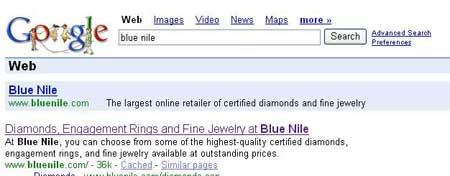When Ron wrote this great post on Marketing’s responsibility for managing customer experience (more on process improvement from me here), I thought I would relate this simple example from the Lab Store.
We sell some exotic pet food that is meant to be a continuity item – the customer buys it every 3 months or so. This product offering is, of course, designed to extend the Customer LifeCycle. The food is a “staple” meaning it is generally kept in the cage at all times to supplement the fresh foods fed to the animal. This food is not as appealing to the anlmal as say, fresh fruit, but it’s an important part of a well rounded diet for the animal. The feeding instructions on the web site are extensive – portion size relative to fresh food, when to feed, amount to feed, etc.
So we start analyzing the repurchase rate of this staple food that is supposed to be our “back end” and it is dismal relative to expectations. Why? Have the customers switched to a different, cheaper source? Are they not feeding the diet plan we suggest? Is this even a “marketing problem”? Well, in the Lab Store, anything related to customer behavior is a marketing problem.
So we grab a sample of the customers who passed the re-order point Tripwire of 3 months without ordering again and ask them, Why aren’t you ordering the staple food? And the answer is “The critters don’t like it”. Really? That’s a surprise; we know the animals generally eat the food. So we ask about portion size, are they following the diet plan? And they say, “Not really, when they didn’t eat the staple food, we thought they would be hungry and so we gave them more fresh food. They never ate any of the staple food”.
And there you have it. We don’t need to ask any other questions. The animal is not going to eat the boring staple food when they are being overfed the fresh food. This is like asking a kid if they would rather have spinach or candy; one is good for them, the other tastes better. And the customer isn’t going to buy staple food the animal will not eat.
The problem is, this “fresh food only” diet is unhealthy for the animal; they are not going to get critical nutrients they need from the staple food. But, this exact feeding scenario is covered on the web site; we’re already communicating this issue to the customer. So it’s not a marketing problem, right?
Wrong. That is the marketing problem – the information is on the web site. We started including a package insert with the staple food containing the very same info as on the web site, except now, of course, it was “contextual”; delivered in exactly the right place and at exactly the right time – when the customer opened the staple food package. And magically, the repeat purchase rate on the staple food increased 32%.
The point is, if we had been off “marketing” and not paying attention to the Potential Value of the customer by setting up the Tripwire, we’d have never found this flaw in the process. And by fixing it, we increase the return on all the acquisition marketing we do, because the LifeCycle of the customer has been extended.
Marketing Productivity, indeed. More Lab Store tales to come.
